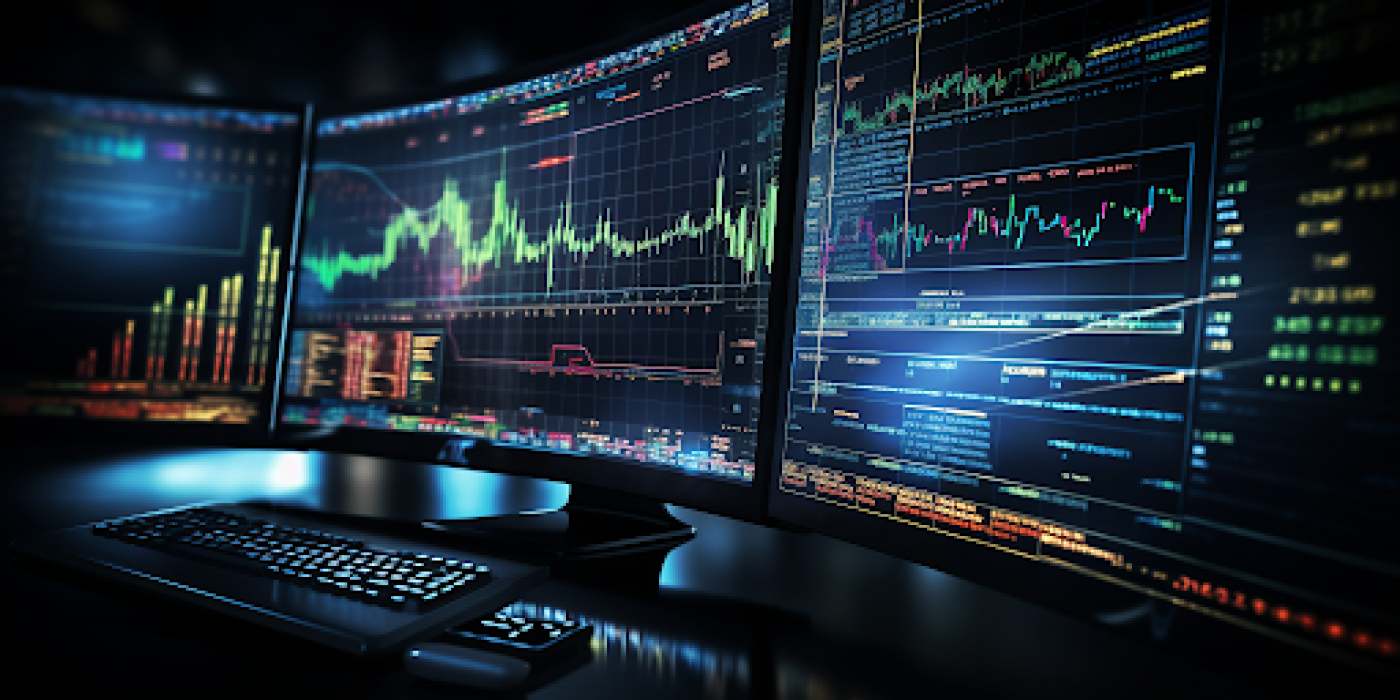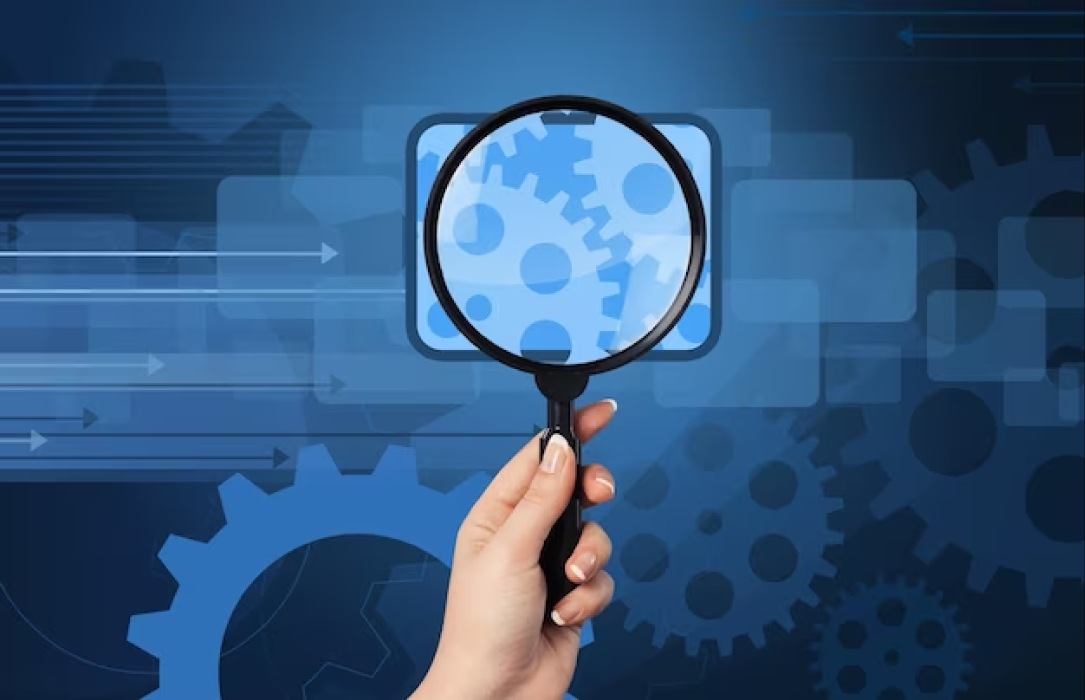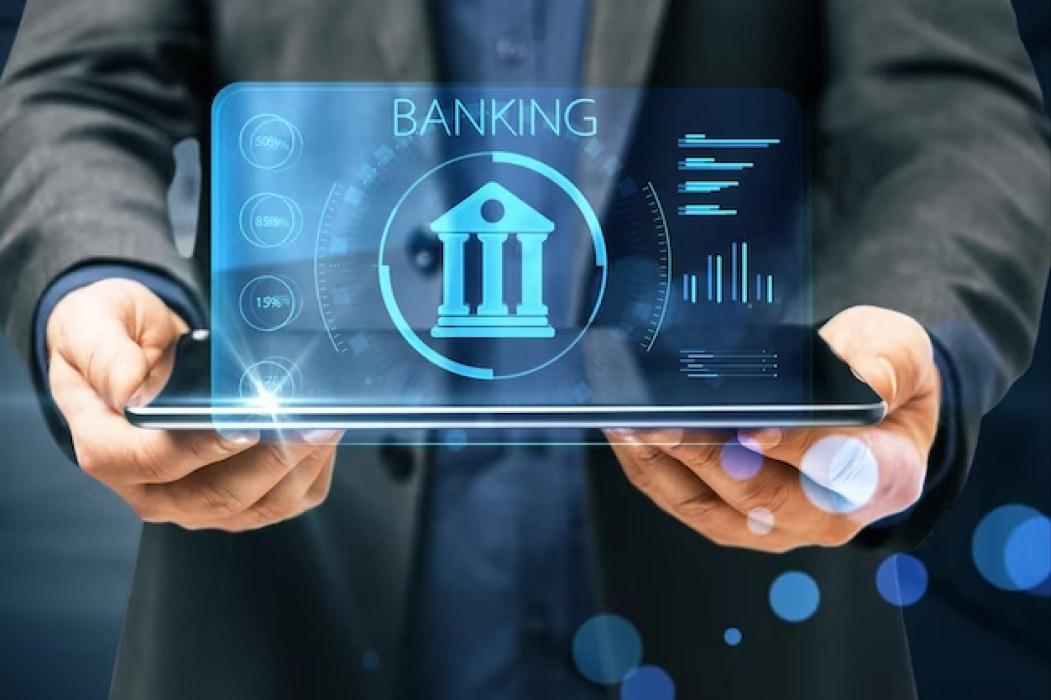Over the past decade, algorithmic trading has become increasingly prevalent in financial markets. Reliant on complex mathematical models and automated high-speed execution of trades, it's estimated that algorithmic trading accounts for around 60-73% of the overall US equity trading.
Algorithmic trading aims to maximize profits and eliminate human emotions from trading and has traditionally relied on rigid, hardcoded algorithms. Over recent years, though, algorithmic trading has transformed thanks to Artificial Intelligence (AI) advancements.
Advanced AI algorithms can analyze vast amounts of data and use this data to learn, adapt, and optimize trades. This article will explore how AI transforms algorithmic trading, from enhancing pattern recognition to enabling predictive analytics and automated trade execution.
1. What is Algorithmic Trading?
Algorithmic trading executes orders in financial markets using pre-programmed instructions based on timing, price, and volume.
Algorithmic Trading, also known as "algo trading," employs various rules and mathematical models to make high-speed, high-frequency trading decisions, enabling traders to exploit market inefficiencies and price discrepancies, thus increasing their productivity.
The main components of algorithmic trading include:
- Algorithms: Programming algorithms that specify buy/sell rules and logic. They incorporate trading strategies such as trend following, arbitrage, market making, and quantitative modeling.
- Computers: Fast computer systems run algorithms and execute trades rapidly in response to market conditions - speed being a critical factor in algo trading.
- Mathematical and Statistical Models: These models built from historical market data help algorithms analyze trends and identify opportunities.
- Risk Management: Techniques are employed to quantify and minimize risk.
- Backtesting: Backtesting uses historical data to see how algorithms would have performed. This evaluates and refines algorithms before actual deployment.
Algorithms automate trading strategies, mitigate human errors and emotional trading, and improve execution speed, thus enhancing profitability and market efficiency. Nevertheless, algorithmic trading isn't perfect and can cause increased market volatility due to the high trading speed.
The models may suffer from "overfitting," which leads to poor predictions, and algo trading can contribute to flash crashes.
2. The Rise of Algorithmic Trading
The launch of the first rule-based fund in 1949 traces back to algorithmic trading. The developers manually tracked and executed trades based on predetermined rules that relied on moving averages in commodity markets.
The groundwork for electronic trading was laid in the 1960s when the first arbitrage trades took place using early computers and with the formation of the NASDAQ in 1971 - the first electronic exchange.
By the 1990s, the rise of the internet and technological advancements enabled the further evolution of algorithmic trading. High-speed broadband connections allowed real-time access to market data and allowed quick execution of trades.
With the increased accessibility to computers, this period also saw the development of advanced trading software that allowed traders to code their automated trading strategies.
With financial markets becoming increasingly globalized and interconnected, the complexity also increased accordingly. Traders needed to respond to these changes more efficiently and effectively, which furthered the requirement for algorithmic trading platforms.
In the 2000s, the growth of algorithmic trading continued to accelerate. High-frequency trading (HFT) emerged as a subset of algorithmic trading during this time, with algorithms making rapid-fire microsecond trades to exploit minute price differences across different exchanges.
HFT came with controversy with debates over its impact on market stability, liquidity, and fairness and has added additional layers of complexity to the markets.
Building upon the advances and complexities of algorithmic trading, AI's accessibility now sets the stage for further revolutionizing the field. Let's explore how AI is making a significant impact on algorithmic trading.
3. How is AI impacting Algorithmic Trading?
Integrating artificial intelligence into existing algorithmic trading practices enables accuracy, speed, and efficiency in trade execution and market prediction like never before.
Algo trading applies several different subcategories of AI, including but not limited to machine learning for pattern recognition and prediction, natural language processing for sentiment analysis, and reinforcement learning for optimizing trading strategies and actions.
- Predictive Analytics
Predictive analytics uses machine learning and statistical techniques to analyze past financial market trends and trading patterns to predict future price movements and trading opportunities.
The underlying AI technologies typically involve regression models, time series analysis, and deep learning networks. These tools enable the prediction of stock prices based on historical prices, volatility, and macroeconomic indicators.
An example of predictive analytics is the development of high-frequency trading algorithms. Traders utilize predictive analytics to make buy or sell decisions in fractions of a second based on predicted market movements.
- Real-Time Analysis
Real-time analysis in algorithmic trading evaluates and responds to market data as it happens. This is crucial in the fast-paced modern trading environment, where relying on human reaction times can have profound implications.
Real-time analysis can involve AI technologies like machine learning and deep learning, with techniques like reinforcement learning used to make trading decisions on the fly.
In high-frequency trading, traders apply real-time analysis tools to identify minute market trends and execute trades within microseconds. This real-time capability is also valuable in managing risk, as AI algorithms can adjust trading strategies dynamically based on real-time market conditions and volatility patterns.
- Pattern Recognition
Pattern recognition in algorithmic trading involves identifying trends or anomalies in historical financial data and applying it to the current state of the markets to make future predictions. Pattern recognition is a powerful approach for maximizing profits and minimizing risk when implemented correctly.
AI technologies that underlie pattern recognition include machine learning and neural networks, convolutional neural networks in particular, which are known for their efficacy in pattern identification in complex datasets.
Think of AI-powered pattern recognition as having an expert technical analyst on your side who remembers the entire market history and uses that information to inform its decisions.
- Sentiment Analysis
Sentiment analysis in algorithmic trading involves examining various sources of information to gauge the public feeling toward specific assets or the market as a whole. Sentiment analysis is a fundamental technique for medium to long-term plays.
The technique relies on natural language processing to analyze textual data from social media, news articles, or financial reports. These analyses can provide unique insights into the macro perspective of markets which is invaluable for identifying trends or confirming suspicions.
- High-Frequency Trading
High-Frequency Trading (HFT) is algorithmic trading involving large trades at extremely high speeds, often within microseconds. HFT uses AI technologies such as machine learning and real-time analysis to make split-second decisions based on tiny inefficiencies in the market.
The goal is to capitalize on these minor price differences that occur in the blink of an eye. An HFT algorithm may purchase a stock and sell it moments later when its price increases slightly, making a small profit that can accumulate significantly due to the volume of trades made.
HFT already exists in the background of most financial markets today.
- Incremental Learning
Incremental learning is a technique in algorithmic trading where the AI model continuously updates its knowledge as new data becomes available. It's beneficial in financial markets, as outdated models can lead to poor decisions and possible mistakes.
Incremental learning generally relies on reinforcement learning, a type of machine learning that works in conjunction with specific neural networks. For example, a trading algorithm could learn from real-time data feeds, continually adjusting its parameters to optimize its trading strategy based on the latest market trends.
This feature helps to maintain the effectiveness of trading strategies over time, despite changing market dynamics.
- Portfolio Management
Portfolio management in the context of algorithmic trading refers to the automated process of allocating investments across various assets to achieve a specific investment objective, such as maximizing returns or minimizing risk.
The underlying AI technologies include machine learning algorithms and optimization techniques, which can analyze a vast amount of financial data to determine the optimal asset allocation. These algorithms consider factors like historical returns, volatilities, and asset correlations.
Robo-advisors, a popular application of AI in portfolio management, automate the investment process by creating and managing a diversified portfolio based on the investor's risk tolerance and investment goals, adjusting the portfolio composition in response to changing market conditions.
4. The Future of Algo Trading
As AI becomes more accessible and easier to integrate into existing algo trading models, the pace at which markets respond to change is bound to increase. With continuous advancements in machine learning, predictive analytics, and reinforcement learning, more profit opportunities emerge for the tech-savvy trader.
Quantum computing developments could revolutionize the creation and execution of algorithms., providing unparalleled processing speed and complexity. Moreover, the integration of blockchain technology could bring added transparency and security.
Regulatory authorities plan to increase scrutiny on the front to address concerns over market manipulation, fairness, and systemic risks, attempting to shape a balanced and fair algorithmic trading environment.
As markets become more interconnected and global, the volume and complexity of data to analyze are increasing at an unprecedented pace. Future algorithmic trading systems will likely need to process these massive data sets efficiently, drawing meaningful inferences quickly and accurately.
This could involve dealing with complex forms of data, including unstructured data sources such as news articles and social media feeds. Another critical aspect to consider is cybersecurity. As trading systems increase in complexity and become more reliant on technology, they become more susceptible to cyber threats.
With such large sums of capital involved, ensuring the robustness and security of these systems will be a critical concern in the advancement of algo trading.
Wrapping Up
As financial markets become faster and more complex, the role of AI in algorithmic trading will only become more influential. Furthermore, We cannot overlook the potential of AI to democratize trading by providing sophisticated analysis tools to the average investor.
Over the coming years, it's looking like we might witness more and more AI-trading algorithms making real-time decisions with accuracy and efficiency unmatched by any human.
While regulatory challenges likely remain, the prospect of a more efficient, transparent, and resilient financial market is an enticing possibility. Still, we must keep the risk of market manipulation by large corporations to a minimum.
In a world where speed, efficiency, and data analysis reign supreme, the fusion of AI and algorithmic trading could be the key to unlocking unique financial possibilities. It offers opportunities for anyone searching for them.















Leave a Reply